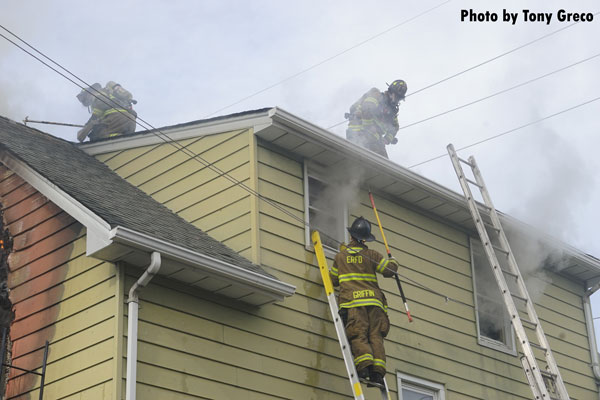
Firefighter training refers to the training and education fire service personnel to help them improve at their jobs and achieve success in the overall mission of saving lives and property from the ravages of fire.
For firefighter recruits, this may include the basic Firefighter I and II curriculum and the physical training and fundamental fire suppression skills acquisition they learn in the fire academy. But firefighter training doesn’t stop there—it includes recurring training in the form of company training led by the company officer or other designated firefighters or the fire department training division; regional or multiagency training with other fire departments and emergency response organizations such as law enforcement and EMS; the informal “curbside critiques” after incidents or learning at the kitchen table; and “outside training” in the form of fire industry conferences and events like the annual Fire Department Instructors Conference (FDIC International), the world’s largest firefighter training conference. In addition, training may encompass higher education, such as obtaining degrees in fire science and related disciplines, or enrolling in the National Fire Academy.
The Importance of Lessons Learned During Training
Making the Most of Your Post Incident Analysis
Creating Dynamic, Real-World Multicompany Training Drills
Originally known as the National Fireman’s Journal with its stated mission of being devoted to the interests of the fireman of the country (and that would of course include fireman training), Fire Engineering magazine has evolved since 1877 to be focused on training the fire service.
What Skills Do Firefighters Have?
As noted by many fire service instructors, the most critical aspect when it comes to fighting structure fires is putting water on the fire—putting “the wet stuff on the red stuff.” These same instructors would likely agree that when you put the fire out, everything gets better for everyone on the fireground. This function is accomplished by engine company operations, and it is engine company firefighters who are generally tasked with delivering water and extinguishing the flames. Fire departments that must deal with staffing shortages or limited personnel may only be able to perform this one function, that of the engine company. So what do engine company firefighters do? Firefighters working on the fire engine must have the ability to establish a water supply, either from a fire hydrant or through tanker shuttle operations and the like. This task often falls to the fire apparatus driver/operator or chauffeur, who not only drives the fire apparatus but must operate the pump to ensure water is flowing for the other members of the engine company. Fire attack team members, meanwhile, must be proficient putting hoselines into service, by flaking out hose and initiating fire attack; maneuvering around obstacles on the fireground, and ultimately knocking down and extinguishing the fire.
Firefighter Training: Pump Operations and More
Truck Company Operations Without the Truck
Coordinating Ventilation with Suppression
But firefighting operations are not that simple, and fire departments with adequate staffing may also have truck companies who perform crucial tasks such as search and rescue, horizontal and vertical ventilation to help remove the products of combustion, forcible entry, vent-enter-search (VES, or vent-enter-isolate-search, VEIS), and various other critical fireground functions. What do truck company firefighters do? The truck company member (the “truckie“) must have a versatile skill set, including the ability to use “the irons,” iconic and fundamental hand tools such as the halligan and the ax along with power saws and other tools to force entry and open up buildings. They may also use the water can (“the can”) to knock down smaller fires. They are often tasked with throwing ladders on the fireground to facilitate search and rescue as well as emergency egress points for interior firefighters who may need to escape. They may be the ones tasked with roof operations, which may take the form of vertical ventilation, the cutting of roofs to allow smoke, heat, and the products of combustion to escape.
Additionally, fire departments fortunate to have more robust staffing or mutual aid agreements may have additional designated companies on scene, such as the rapid intervention team (RIT, sometimes known as the rapid intervention crew (RIC) or Firefighter Assist and Search Team (FAST)). The RIT would be assigned with responding to Mayday situations in which firefighters get into trouble on the fireground and rescuing and removing down firefighters.
Rapid Intervention Teams: Saving Their Own


